WORD NEWS
‘I assumed they’d kill us’: how the US navy devastated a tiny Puerto Rican island | Puerto Rico
When Carmen Valencia was 5 years previous, troops got here banging on her door. Her mom grabbed an extended machete. “I had no concept what was happening, however I assumed, if they arrive in right here, they’re going to kill us.”
Now 78, Valencia has lived most of her life on Vieques, one of many Caribbean’s most picturesque islands, below the thunder of bombs. They roared from navy planes simply over the hill by her mom’s home, leaving the odor of smoke hanging thick within the air.
She was much more terrified of the troops, who would stalk her neighborhood in search of ladies to harass.
However Valencia and her complete household are US residents. Vieques is a part of Puerto Rico, a US territory. She wasn’t dwelling in an enemy nation – only a 52-square-mile island of farms and cattle ranches, ringed by pristine gold seashores and crystal waters.

To the US navy, Vieques was what an admiral referred to as its “crown jewel”: the right setting to make use of for goal observe. From 1941 till 2003, the navy fired an appalling amount of explosives into Vieques’ land and sea, and 20 years later, islanders nonetheless bear the devastating penalties.
Formerly a Spanish colony, Puerto Rico was seized by the US in 1898 as a battle prize. Within the following years, a collection of racist supreme court docket rulings outlined Puerto Rico’s standing as a territory “belonging to” however not “a part of” the US, citing its “alien races” and “savage tribes”. Although Puerto Ricans have been made US residents in 1917 – partly in order that they could possibly be drafted into the primary world battle – they nonetheless can’t vote in presidential elections, and their sole consultant to Congress can’t vote both.
In 1941, US troops evicted Vieques’ roughly 10,000 residents at gunpoint and relocated them to a slim strip of land in Vieques’ heart. The remainder of the island was became a de facto battle zone – deploying, by one navy admiral’s estimate, as a lot as 3m kilos a 12 months of reside ordinances containing napalm, depleted uranium, lead, and different poisonous chemical substances, for greater than 60 years. “They did something right here that they needed,” Valencia says.
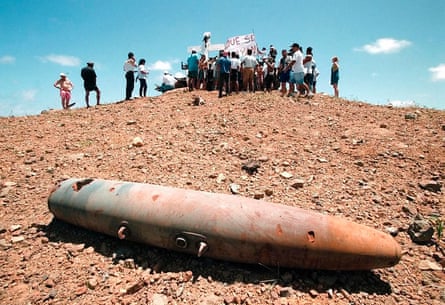
Islanders protested in useless till 1999, when the navy unintentionally dropped a 500lb bomb on a lookout put up, killing David Sanes, a 35-year-old Viequense who labored there as a safety guard. Viequenses responded with civil disobedience to impede the navy base’s operations, drawing world headlines and visits from Ricky Martin, Al Sharpton, and the Dalai Lama. Valencia joined a brand new group referred to as the Vieques Ladies’s Alliance, which mobilized a whole bunch of girls to the entrance strains. In 2001, she and 30 different ladies broke into the bottom and have been briefly jailed. “We needed to be arrested,” she says. “We needed to converse our proper to be there.”
After two years of protests, George W Bush admitted defeat. “They don’t need us there,” he conceded (“probably the most stunning speech I ever heard,” Valencia says). And 20 years in the past, on 1 Might 2003, the bottom closed for good.
Although the islanders defeated the US navy and not using a single bullet, one other wrestle was simply starting. Twenty years later, Vieques is wounded by abnormally excessive charges of illness, a discriminatory financial system, and a scarcity of fundamental providers that’s made dwelling right here even tougher than earlier than. It is a story concerning the long-term penalties of colonialism, and a group that’s decided towards all odds to get free.
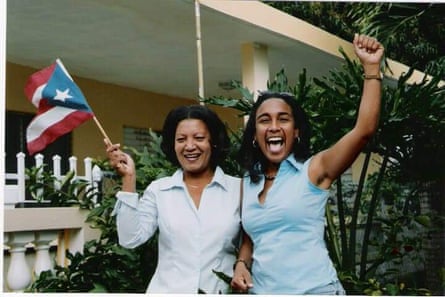
‘In the end, we’re useless with one thing’
To many guests, Vieques seems like paradise. Wild horses roam the winding streets, in entrance of Spanish-style homes with sweeping sea views. It’s the location of one of many world’s few bioluminescent bays, with aquatic microorganisms that glitter blue below a moonless sky. And the previous navy grounds have been designated as a wildlife refuge, dwelling to among the continent’s most numerous fowl populations.
What vacationer brochures don’t normally point out is the dizzying variety of unexploded ordinances – what the navy calls UXOs – that also litter Vieques’ land and water. The navy is accountable for the cleanup, and to this point it’s eliminated 129,000 munition objects from greater than 4,400 acres, based on Dan Waddill, the navy’s Vieques restoration department head. However the navy hasn’t begun eradicating explosives from the encircling seas. “The land was a better precedence,” he says, “and the underwater work is harder.” The navy beforehand introduced a completion date of 2032, however that’s been pushed again to 2033, Waddill says.


When cleansing crews discover a UXO, they like to detonate it in open air, a way that the navy considers least harmful: “It’s simply not secure for the employees to move these munitions to a detonation chamber,” Waddill says. These blasts come with out warning, generally piercing by Sunday church providers. However what disturbs residents probably the most are the explosive chemical substances launched into the air – one thing they concern has been slowly killing them over the a long time.
Although no official trigger has been decided, research have discovered unusually excessive concentrations of poisonous metals like mercury, uranium, and arsenic in viequenses’ hair and urine. Shortly earlier than the navy’s departure, Carmen Ortiz Roque, a Puerto Rico epidemiologist who studied Vieques for years, discovered residents there have been 30% likelier to die from most cancers than different Puerto Ricans, with considerably larger charges of coronary heart illness, liver illness, diabetes, and toddler mortality. One other evaluation discovered Vieques islanders over 50 are as a lot as 280% extra prone to have lung most cancers than different Puerto Ricans. “The human inhabitants of Vieques is by far the sickest human inhabitants that I’ve ever labored with,” Ortiz Roque stated.
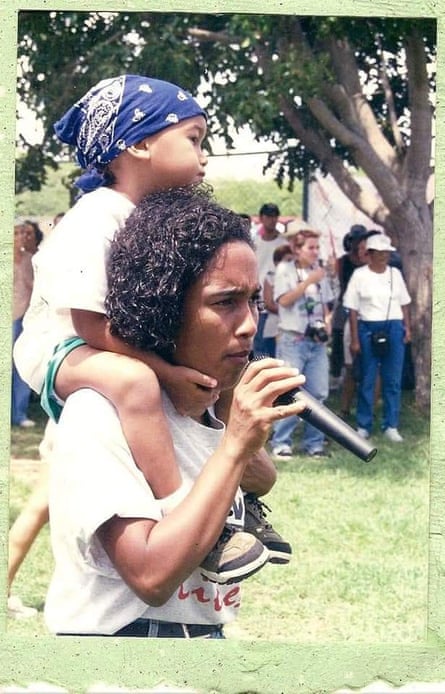
The navy insists it’s to not blame, citing a 2013 report by the Facilities for Illness Management and Prevention’s Company for Poisonous Substances and Illness Registry (ATSDR) that concluded that any airborne contaminants from the navy’s bombing can be “basically undetectable” for Vieques residents. “The navy actions have been a number of miles from the place the folks reside,” Wadill says. The explosions would have left “very, very small concentrations” of natural chemical substances that “disappear shortly”, and “these actions simply didn’t trigger publicity to the those who reside there”.
That’s not how the islanders see it. Throughout the 1999 protests, Viequenses rallied round Milivi Adams, a toddler identified with a uncommon type of nerve most cancers. Medical doctors discovered elevated uranium ranges within the lady’s blood; she died simply months earlier than the navy closed its base.
Almost everybody on the island has misplaced somebody. The Vieques Ladies’s Alliance’s co-founder, Gladys Rivera, died of abdomen most cancers in 2007. Valencia’s husband, a civil servant named Luis, died in 2014 of liver failure, although he not often drank. “Individuals who have been right here, in the end they’re useless with one thing,” Valecia says. “[The navy doesn’t] imagine it’s like that, however it’s our reality.”
Making the state of affairs even deadlier is Vieques’ lack of a medical heart. In 2017, Hurricane Maria lowered Vieques’ solely hospital to rubble. Years later, a substitute nonetheless hasn’t been constructed. That’s been devastating for Vieques, the place half the residents reside in poverty and almost one-fifth haven’t any medical insurance. Now, Viequenses who want medical care should battle with vacationers for ferry tickets to Puerto Rico’s primary island, generally tenting out in a single day simply to get on board. Some by no means make it: like 13-year-old Jaideliz Moreno Ventura, who died in 2020 after experiencing flu-like signs that became convulsions. Her household took her to Vieques’ makeshift native clinic, but it surely lacked a working respirator – her household is now suing the Puerto Rican authorities.
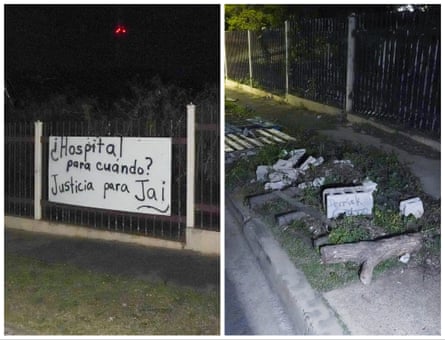
That’s left the islanders to take issues into their very own palms. During the last decade, Valencia has been volunteering with Nilda Medina, a fellow veteran of the Vieques Ladies’s Alliance, to rearrange cellular most cancers screening vans to go to Vieques by cargo ferry a couple of occasions a 12 months. The work could be emotionally draining. “Day by day I study that there’s another particular person with most cancers,” Medina says.
The burden grew even heavier when her husband, a well known activist named Robert Rabin, died of most cancers final March. In Rabin’s remaining months, the couple needed to get up at 4 within the morning to take the ferry to his chemotherapy periods in Puerto Rico’s capital, San Juan. Once they returned dwelling to Vieques, there was no technique to get morphine. “He had a really, very exhausting most cancers. However he knew there was no remedy right here. So he by no means stated he had ache, he by no means complained,” Medina says, her voice breaking. “He was very quiet, like he was doing civil disobedience.”
‘There is no such thing as a plan’
Sickness isn’t the one factor that threatens the islanders’ survival.
Throughout their battle video games for roughly two months a 12 months, the variety of navy troops would swell to as many as 100,000. Once they weren’t shredding Vieques with explosives, they swarmed into city, reordering the island’s economic system to run their bars, laundromats, and brothels. Although the troops harassed and assaulted native residents with impunity, the islanders additionally dreaded the drills ending, which meant one other 10 agonizing months with out work.

Right this moment, the island is experiencing what many residents see as one other form of colonial conquest from rich US mainlanders – norte americanos. Strolling round in Isabel Segunda, one of many island’s two cities, I overhear way more English than Spanish. On the beachfront, marble-floored luxurious villas providing on-site massages cost friends as a lot as $3,000 an evening. At sunset in Esperanza, a resort space to the south, beer joints full of white People spill into the streets. I meet a pair from Miami who’re visiting Vieques for the primary time, and already contemplating shopping for property right here.
In 2012, Puerto Rico’s governor enacted big incentives for People who transfer there and purchase actual property – together with full exemptions on their revenue and capital positive aspects tax. That’s drawn a flood of buyers, together with the YouTube influencer Logan Paul, who snapped up a $13m mansion close to San Juan in 2021, and the crypto mogul Brock Pierce, who paid $18.3m final 12 months to purchase Vieques’ luxurious W resort, which closed after Hurricane Maria.

Native Viequenses already dwelling there wouldn’t qualify for these tax breaks. However within the final 20 years, officers have completed “nothing, zero” to spend money on native financial improvement, Medina says. “There is no such thing as a plan.”
Locals say that gringos started snatching up property in Vieques nearly as quickly because the navy left, usually turning it into trip leases to rack up tax-free income. In 1999, a house in Vieques could possibly be had for about $50,000, says Judith Conde, a household and client sciences researcher and a co-founder of the Vieques Ladies’s Alliance. These costs doubled, then quadrupled, and now she usually spots homes promoting for $1m or $2m. Even a ruined construction on an overgrown lot can fetch $250,000, an unimaginable sum for many Viequenses, whose per capita revenue is lower than $9,000, current census figures present.
In consequence, Conde says, she’s seeing homelessness at a charge that may have been unthinkable in Vieques 20 years in the past. In the meantime, American consumers usually knock on her door and ask, “How a lot is your own home?” She responds: “We don’t have an indication – do you see one thing that claims it’s on the market?”
Vieques’ native authorities has defended the capital inflow as one thing that enhances the economic system. However as a result of the rich gringos pay so few taxes, the municipal budgets stay grossly underfunded – one of many causes Vieques nonetheless doesn’t have a hospital. Trip rental house owners are actually presupposed to register and pay occupancy taxes, however many homeowners don’t hassle registering their properties. Kathy Gannett, a group activist who runs a guesthouse, says these laws aren’t robust sufficient; she’s by no means met somebody who’s been audited. (Vieques’ mayor didn’t return requests for remark.)
With few prospects, many younger Vieques residents find yourself leaving the island. And a few who can’t afford to finish up within the unlawful drug commerce. Elda Guadalupe, 45, is a center faculty science trainer, and sees college students’ desperation first-hand: “I’ve had 13-year-old youngsters say to me, ‘Yeah, I’m simply going to site visitors medicine. It’s simpler.’” She tries telling them, “For those who site visitors medicine, there’s not plenty of choices. You may get caught and go to jail, otherwise you’re going to finish up within the drug battle and perhaps get killed.” Their reply breaks her coronary heart: “If I get caught, they’ll let me out quickly. And if I get killed, not less than I gave my household some cash.”
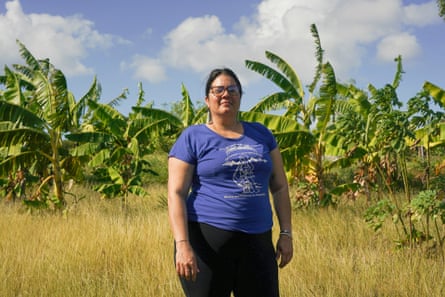
Meals equals freedom
For the Viequenses, colonization isn’t an summary idea: they will actually style it. Although it was as soon as its personal agricultural powerhouse, Puerto Rico is now compelled to rely upon imports for roughly 85% of its meals, largely from the US. In Vieques, “that quantity is nearer to 98%, and it’s at all times the worst meals,” says Guadalupe. Produce should take an extended journey from the mainland US to Puerto Rico’s primary island, earlier than it lastly arrives to Vieques. “Even when the greens get right here, the meat and milk is already rotten, as a result of it’s been ready so lengthy within the vans,” she says. If there’s dangerous climate, “generally you go to the grocery store and there’s no meals in any respect”.
Beneath the Jones Act, a controversial commerce legislation enacted a century in the past, Puerto Ricans might solely import cargo from US ports on vessels which can be US-built, US-owned, US-operated, and US-crewed. The rule roughly doubles the price of sending items to Puerto Rico, so even the meals that’s going dangerous is dear. Guadalupe sees the shortage of recent objects as a contributor to Viequenses’ well being issues: “Persons are consuming extra canned meals, which makes use of extra salt, which suggests extra hypertension. Then you want to transport your self to the primary island as a result of there’s no specialist medical doctors right here. And it’s a cycle.”
Guadalupe needs to revive the traditions that after made Vieques self-sufficient. In 2018, she and a bunch of Viequense ladies began La Colmena Cimarrona, a 20-acre sustainable farming mission close to the middle of the island. The work is hard – to create the farm, they needed to clear acres of unruly bushland by hand – however now there live quarters, a greenhouse, and an irrigation pond that feeds rows of crops, together with a colonnade of gently swaying plantain bushes. They promote their produce to native residents at a 25% low cost.

Ana Elisa Peréz-Quintero, a La Colmena co-founder, says they’re attempting to create a brand new imaginative and prescient of survival. “How do you compete with a drug lord or a Brock Pierce, or only a plain gringo with some huge cash and privilege?” she says. “They need to personal the land and preserve a couple of of us as service folks, to serve the piña coladas and construct all of the inns. We’re actually attempting to create one thing new.”
For Guadalupe, the purpose is easy: “For those who can produce your individual meals, you may ultimately produce your individual freedom.”
Extra sources and fewer concern
There are different indicators that Vieques isn’t prepared to surrender. Not too long ago, the Ladies’s Alliance reconvened for the primary time in years, together with members who have been born after the navy protests. Conde, the ladies’s alliance co-founder, says their vitality evokes her: “They’re extra conscientious about poverty, and about points like feminism, patriarchy, colonialism, and racism within the wrestle,” says Conde. “I noticed me in 1999, however with extra sources and fewer concern.”
With the hospital nonetheless not constructed, fed-up Viequenses have been staging one other protest, stacking cinder blocks on the sidewalk exterior the shuttered web site. Some signal their very own names; others write the title of Jaideliz Moreno Ventura, the lady who died in 2020.
In Congress, Puerto Rico’s non-voting consultant, Jenniffer González-Colón, has spent years pushing for reparations to Viequenses harmed by navy actions. Her newest invoice, the Vieques Restoration and Redevelopment Act, would appoint a particular grasp to approve compensation between $50,00 to $110,000 to every islander, relying on the severity of the influence. It will even be a technique to compel actual solutions on what actually occurred to residents: “We must always enable them to show their case,” González-Colón says.

Valencia isn’t ready for politicians. Today, she accompanies most cancers sufferers to the primary island, particularly those “with no person to handle them”. However lately, she acquired sick with a mysterious kidney situation. Nobody knew the best way to assist her in Vieques, and specialists in San Juan stated it will be an eight-month wait. So she did one thing most islanders can’t afford: she flew to Miami, the place her daughter is a medical employee. And after a weekend keep in a hospital there, “I used to be feeling simply nice.”
The painful second got here afterward. Valencia’s son-in-law took her on a harbor cruise, and somebody identified the man-made islands in Biscayne Bay. Valencia instantly felt her blood stress rising. “These islands weren’t completed by God. Why didn’t the navy make their very own islands to do their practices someplace else?”
She imagined Vieques: only a tiny dot, too small to even present up on most world maps. House. “They usually needed to decide us. It was as in the event that they needed us to vanish.”
Trending
-
Bank and Cryptocurrency11 months ago
Cheap Car Insurance Rates Guide to Understanding Your Options, Laws, and Discounts
-
Bank and Cryptocurrency11 months ago
Why Do We Need an Insurance for Our Vehicle?
-

 entertainement5 months ago
entertainement5 months agoHOUSE OF FUN DAILY GIFTS
-
WORD NEWS12 months ago
Swan wrangling and ‘steamy trysts’: the weird lives and jobs of the king’s entourage | Monarchy
